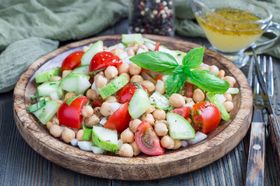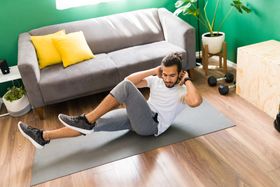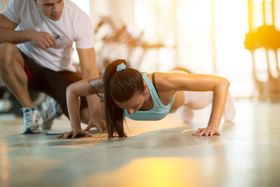Why You Get Muscles Cramps During Exercise & How to Prevent Them
Published May 15, 2023.

If you've ever been struck by a sudden, painful muscle cramp during or after a workout, you're not alone. These involuntary muscle contractions are a common issue for both athletes and regular gym-goers. Characterized by their unpredictable onset and sometimes intense discomfort, muscle cramps can last from a few fleeting seconds to several agonizing minutes.
Despite being a widespread issue, the causes of exercise-induced muscle cramps, or EAMC, are not fully understood and can vary widely.
Here’s some information about why they occur and how to prevent them:
Why Do Muscles Cramp During Exercise?
Muscle cramps can result from various factors:
- Dehydration: Muscles need a significant amount of water daily. Without adequate hydration, muscles may become sensitive and prone to involuntary contractions.
- Poor Conditioning: Exercise, diet, and rest form the trifecta of conditioning. A lack of physiological preparation can lead to muscle cramps during your workout. Overexerting yourself or starting a new activity without proper stretching can induce muscle cramps.
- Electrolyte Imbalance: Electrolytes such as potassium, magnesium, and calcium are crucial for muscle function. An imbalance or depletion of these, often due to diuretic use, can cause painful cramps.
- Muscle Fatigue: Overloading and fatiguing skeletal muscles can result in cramping of the overworked fibers. Some signs of muscle fatigue include weakness or a weakened grip, muscle twitching, and overheating during exercise.
» Did you know that exercising can boost your confidence?
How To Prevent Muscle Cramps During Exercise
Some key points to keep in mind
Stretch
A gentle warm-up and stretching routine can prepare your muscles for exercise, increasing blood flow, flexibility, and range of motion. If you experience a cramp, respond with slow, sustained stretching and consider slowing your exercise pace or walking it off.
Keep Hydrated
Ensure you drink enough water during and after your workout, especially in hot and humid conditions. Heavy sweating can deplete your body of essential electrolytes. Dehydration signs include a dry mouth, less frequent urination (with darker urine color), and tiredness impacting your performance. Regular hydration helps maintain optimal blood flow to muscles and replenishes lost electrolytes.
Quick Tip!
Pinch the skin on the back of your hand. If it doesn't return to its original position within a couple of seconds, you may be dehydrated.
Dress Appropriately
Overly warm clothing can cause overheating, potentially leading to muscle fatigue and cramps. Tight clothing like compression shorts and skinny yoga pants can restrict blood circulation, also contributing to cramps. Opt for comfortable workout gear that allows freedom of movement and breathability.
Eat Healthy
Muscle cramps can suggest a nutritional deficiency. Strategies to address this include increasing your fruit and vegetable intake, consuming carbohydrates before workouts, and choosing foods rich in potassium and salt.
Foods beneficial for cramp prevention:
- Potassium: Bananas, salmon, sweet potatoes
- Magnesium: Lentils
- Calcium: Milk, cheese, yogurt
» Boost your endurance with at-home workouts
Cramp-Proof Your Workout
A balanced diet rich in cramp-preventing foods and dedicated conditioning time can significantly reduce the risk of muscle cramps. Consistency is key. Try incorporating a condensed HIIT workout, such as a 7-minute routine, into your daily schedule to ease your body into exercise and support your fitness goals. This low-impact, quick workout is an easy addition to your routine that can further help in preventing cramps during exercise.





